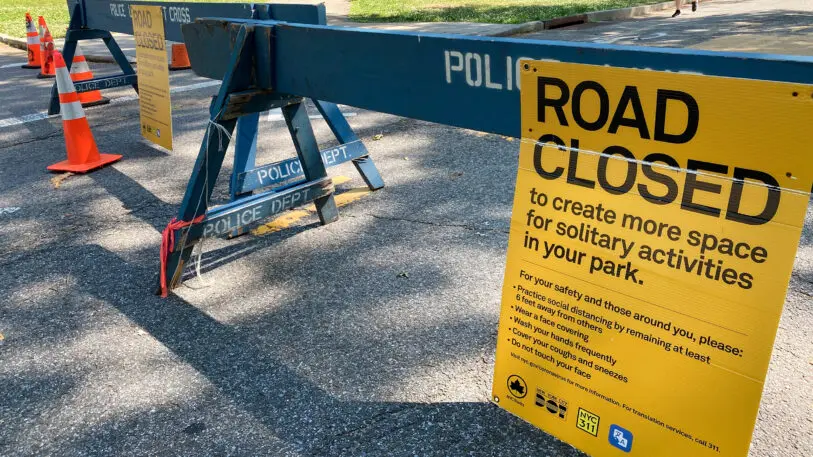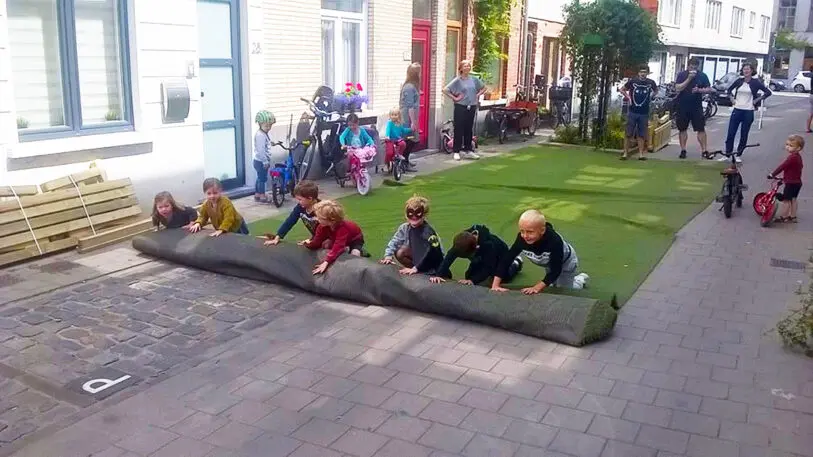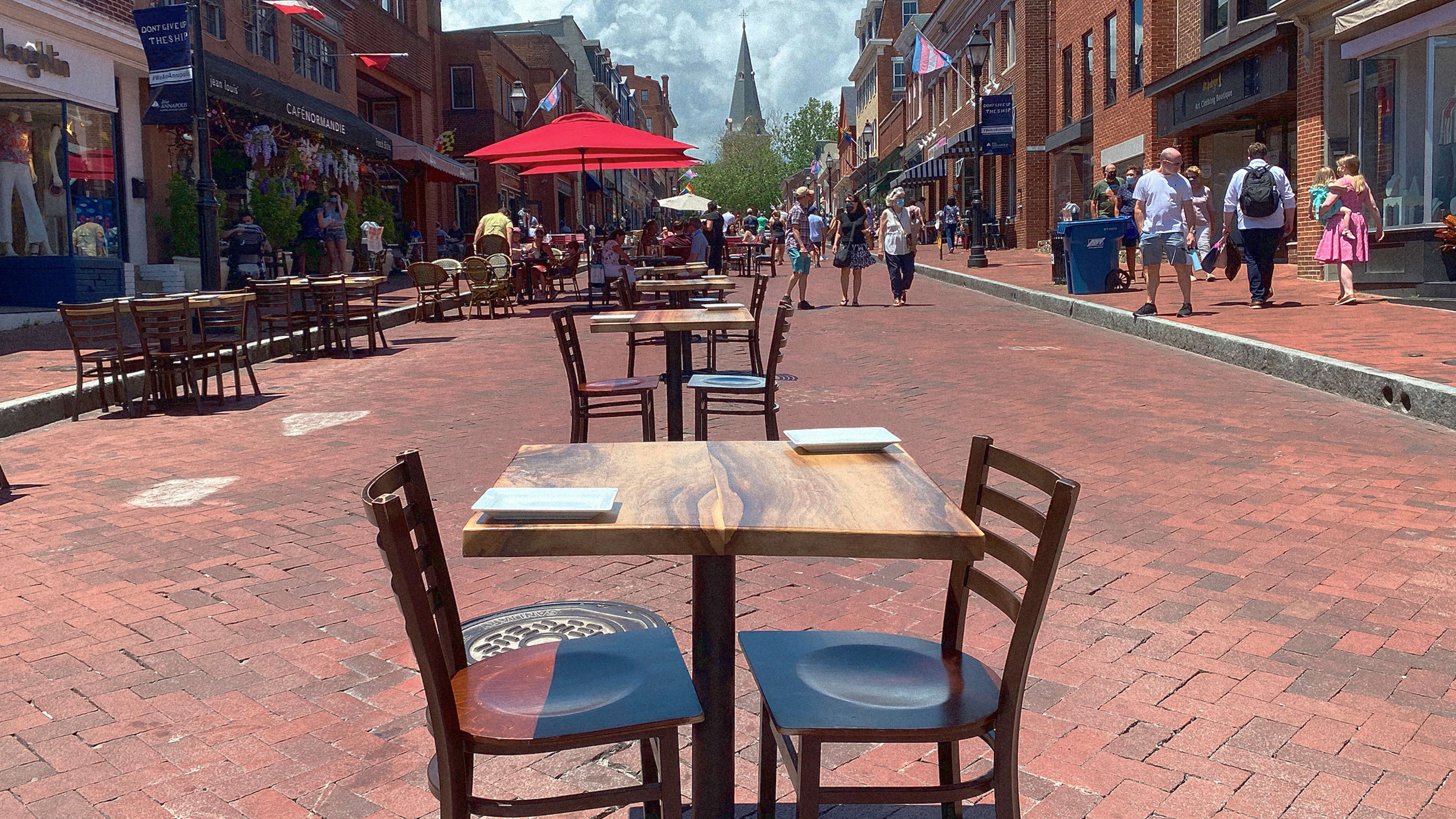Streets are the realm of the automobile these days, but that hasn’t always been the case. Before cars and parking spots took over the space between our buildings and homes, streets were much more diverse: Photos from the pre-car era show people on foot and bike intermixed with horses, wagons, pushcarts, vendors, streetcars, and more. Today, the ubiquity of the motorized vehicle and the auto-dependency of much of modern cities has slashed the street’s diversity basically down to the car alone.
Then the coronavirus pandemic happened.
“It’s an incredible natural experiment,” says Luca Bertolini, an urban planning professor at the University of Amsterdam. The need for social distance to reduce the spread of the virus has prompted some cities to open streets to different modes of transportation. “What that means, even if you don’t have any aspirations in terms of changing the urban mobility system, is to rely on ways of moving around that are efficient in the way they use space and also safe, and that’s basically active modes, walking and cycling,” he says.

Though closures are on the rise, Bertolini’s research shows that the vast majority create only temporary change. “At worst they’re seen as an annoyance, disrupting the function of the system, and at best like a carnival for a few days or a few weeks to do things different,” Bertolini says. “But hardly any serious attention is given to ways of experimenting—of a fundamental different way of thinking that could be scaled up.”
Closures have also been criticized for creating safe streets that largely benefit white populations, while ignoring larger inequities in city planning—inequities that disproportionately impact Black and brown communities. “…[T]he lack of a process and participatory decision-making behind these projects was an absolute nightmare,” urban planner Destiny Thomas wrote on CityLab about the rush in many U.S. cities to open streets in response to the coronavirus pandemic. “…If you want to ban cars, start by banning racism.”
Bertolini points to some experimental street closures that led to broader change. He points to the example of City Repair, in Portland, Oregon, a nonprofit placemaking organization that’s been helping neighborhoods take ownership over intersections and corners through elaborate street painting and traffic calming projects since 1996. At first an illegal intervention that added “interaction amenities” such as community boards and tea kiosks to corners, the project is now sanctioned by the city and has completed more than 70 projects throughout the metropolitan area. Playing Out, a similar grassroots project in Bristol, England, started out in 2011 as a short street closure to create play space for children. It has since turned into a nationally focused nonprofit and has facilitated temporary street closures throughout the United Kingdom.
How streets are converted matters as much as, if not more so, than the conversions themselves. In Ghent, Belgium, a city-run program called Leefstraten, or Living Streets, now turns an average of 15 sections of streets throughout the city into car-free spaces annually. Running between six weeks and six months, the Living Streets become extended shared outdoor spaces for communities. At the end of their run, the streets return to normal. Initially launched as a way to rethink mobility in the city, the program is now about improving connections between neighbors. “The dynamic has changed, and now it’s not about mobility but about social cohesion,” says Hanne Geutjens, from the city’s office of meeting and connection.

The process is slow by design. The city suggests dedicating 20 weeks for the entire process, from organizing neighbors, surveying them for ideas, developing a plan, and submitting it for approval to eight or nine different city agencies. The city doesn’t make the organizers collect signatures or meet any hard threshold of participation, but instead requires that they have a conversation with every household on the street. The goal is to gather ideas and increase involvement, but also to document any problems people might have with the street closure—mostly concerning parking—in order to identify solutions. “That’s a big job, but in the end it’s important because every resident is involved,” Geutjens says.
The converted streets quickly become part of people’s lives, she says, with families having outdoor meals, older residents meeting in the mornings for coffee, and even indoor chores such as folding laundry moving out into the social space.
Some are even becoming permanent. One street, which is in front of a school, now prohibits car traffic. In another neighborhood, residents are planning a Living Street explicitly for the purpose of seeing how a permanent closure would affect the area.
Bertolini says this is exactly the kind of trial run cities can encourage. Testing and evaluating new approaches, and seeing them as more than a novelty, is a key step in opening the door to transformation, he says: “You cannot think this change can happen from one day to another, so you have to experiment to understand what the problems are and how to solve them.”
Recognize your brand’s excellence by applying to this year’s Brands That Matter Awards before the early-rate deadline, May 3.
